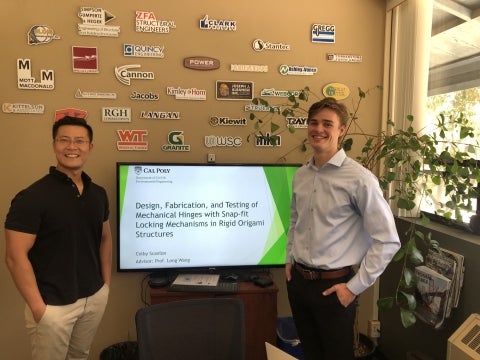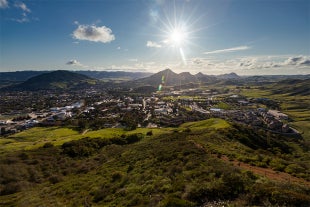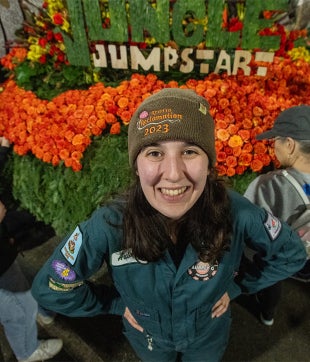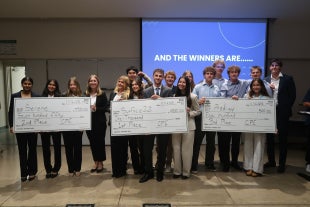Two New Cal Poly Patents Showcase Innovation in Health Care and Disaster Relief
Contact: Emily Slater
805-266-0208; emslater@calpoly.edu
SAN LUIS OBISPO — Two recently awarded patents developed at Cal Poly reflect the university’s commitment to solving pressing, real-world problems — from reducing the risk of limb loss to creating better options for rapid, foldable construction.
The patents, developed by biomedical engineering Professor Trevor Cardinal and structural engineering Professor Long Wang, were supported through Cal Poly’s Office of Research, which helps faculty protect intellectual property and bring innovations to broader audiences.
Cardinal’s patent introduces a new approach to helping patients with clogged arteries, a condition that can restrict blood flow and lead to amputation, particularly in the legs and among people with diabetes or obesity.
When arteries become clogged, the body can create natural bypasses to reroute blood flow around the blockage. But often, these small vessels don’t enlarge sufficiently to keep the downstream tissue alive, Cardinal said.
His patent explores a method to stimulate the growth of these natural bypasses. The idea began during Cardinal’s graduate studies at the University of Arizona, where he focused on muscle stem cells and blood vessel remodeling. At Cal Poly, he expanded the research alongside students, transplanting muscle stem cells into mice. Two of his students, Vahid Hamzeinejad and Ethan Tietze, are listed as co-inventors.
“In the lean mice, the cells did nothing, but in the obese mice, they enhanced the growth of natural bypasses,” Cardinal said. “That outcome supported our hypothesis that muscle stem cells can overcome the proinflammatory metabolic environment that has limited the effectiveness of other cell therapies explored for preventing amputations when limb arteries become clogged.”
The results are particularly promising, given that many vascular disease patients also have metabolic conditions such as diabetes or high cholesterol — both of which have hampered past treatment efforts.
“We don’t know if these cells will work in humans yet,” he said. “But our results in mice suggest greater promise for muscle stem cells than other cell types that have already been tested, and found lacking, in clinical trials.”
Cardinal said the next steps include replacing mouse cells with human cells and securing additional funding to better understand how muscle stem cells communicate with other cells in the body.

Meanwhile, Wang’s patent addresses a very different kind of challenge: how to rapidly construct strong, temporary structures for situations such as disaster relief.
Developed with graduate student Colby Scanlon, Wang’s hinge system allows smaller panels to connect and fold into larger, rigid forms that can be assembled and disassembled easily.
“I was looking at deployable structures in space,” Wang said, referencing NASA’s use of foldable habitats. “Inspired by these concepts, I wanted to adapt them for civil applications.”
Their patented hinge, tested using 3D-printed models and wooden panels, forms the backbone of a lightweight, origami-inspired system that folds down for transport and unfolds into a functional structure. Wang said the system offers fast, low-cost construction and could benefit a range of sectors.
“It’s not fancy,” he said, “but sometimes the simplest solutions are the best.”
Wang believes the technology also holds commercial potential — from temporary event setups to mobile structures for military or other rapidly deployable uses. His work is one example of how Cal Poly research can move from concept to real-world application.
To learn more about research and technology transfer at Cal Poly, visit the Office of Research. If you’re interested in pursuing a patent or learning more about innovation support services, additional resources are available on the site.
Top Photo:
Biomedical engineering senior Erica Duffy replenishes human muscle stem cells with fresh growth media in the Cell Therapy Lab, found in the Frost Center.



